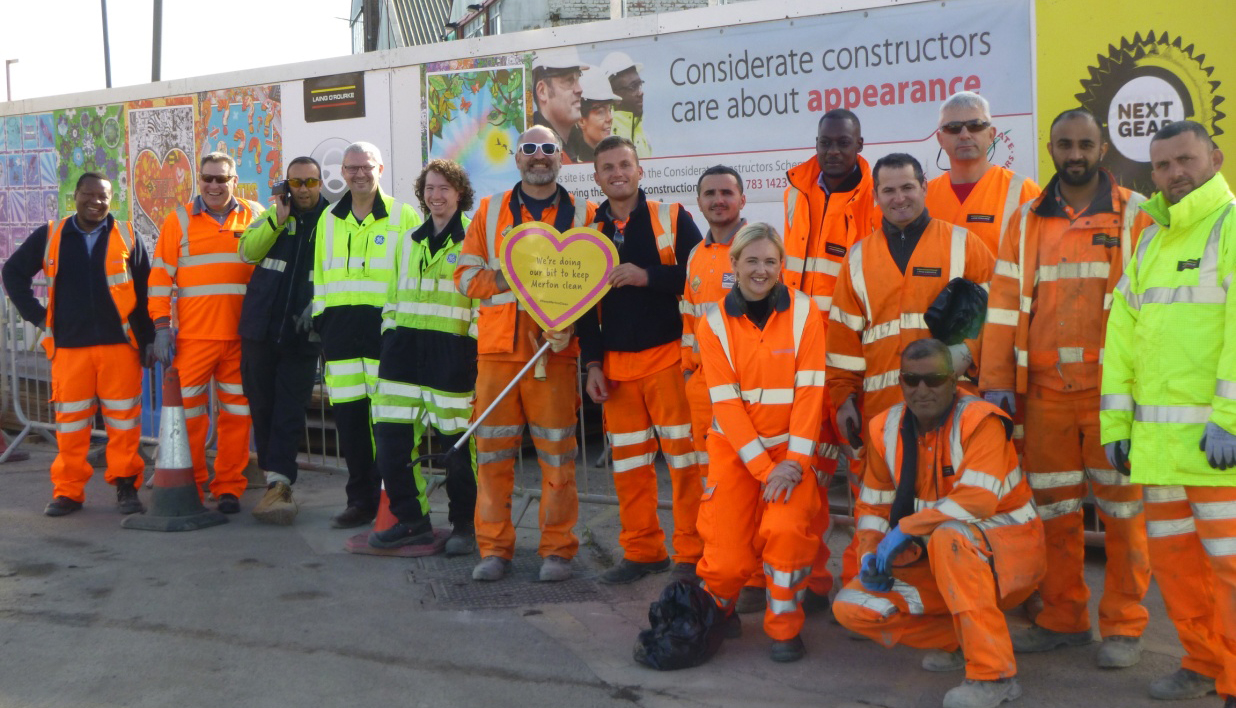Award-winning Laing O’Rourke project team praised for innovative carbon footprint-reducing technology
Laing O’Rourke is reducing its environmental impact and received a National Grid Award, thanks to its introduction of pre-assembled energy-reducing switchgear on its Wimbledon substation project.
The innovation was implemented on the Wimbledon Asset Replacement Scheme project – a contract to construct a new 400kv, 16-bay gas insulated substation for the National Grid, located in Garratt Business Park, south-west London.
The project also included the installation of eight super grid transformers, two shunt reactors, HV and LV cabling systems and associated civil construction work.
First ever carbon weighting National Grid tender
In collaboration with GE (General Electric) and Mott MacDonald, Laing O’Rourke used modelling software to reduce the carbon footprint by 23% and this was the first National Grid tender to include a weighting in carbon.
Outlining this innovation, Lodewyk de Clercq, Project Leader (power sector) for Laing O’Rourke Infrastructure said:
“At tender stage, we engaged with the supply chain to find the latest innovation and products. By using the newest products available on the market, the footprint of the substation could be halved, with a 23% carbon reduction. This equated to approximately a £3m saving, or the equivalent of removing 7,600 cars off the road for a year.
“In the detailed design phase, using BIM, we were able to highlight further carbon savings and really show how effective the design changes have been in reducing the project’s environmental impact. An example of this is the 17% reduction in piles and removal of pile caps.”
Asked if this innovation will be rolled out to Laing O’Rourke’s other projects, Lodewyk said:
“Laing O’Rourke are an innovative company who always strive to work with the latest innovations. Prior to start-up, best practice from other sites is reviewed to identify what could be harnessed and taken to the next level. The use of BIM and embodied carbon quantification has been shared across internal and external stakeholders and is used where applicable.”
Harmonious community engagement
Outlining the successful community relations fostered on this project, Lodewyk said:
“Our relationship with the community has been harmonious throughout the project with consultation being undertaken from day-one by the National Grid’s Community Relations Team. One particular challenge was the small footprint of the site; facilitating deliveries of large pieces of kit required careful planning and regular liaison with the Garrett Business Park residents.”
Praise for new technology
Praising this new technology, Scheme Monitor Chris O’Sullivan said:
“The 400kv gas-insulated switchgear is about half the size of previously established switchgear used within substations. This resulted in a significant saving in the insulating gas – sulfur hexafluoride. Using this type of gas-insulated switchgear offers significant savings in space requirements, compared to older versions of air-insulated substations.
“Using this switchgear led to significant carbon reduction at Wimbledon by decreasing the volumes of sulfur hexafluoride, steel and concrete required to complete the build.
“The work on carbon reduction led to the contractor winning a National Grid Award, as well as a Sustainable Contractor of the Year Award, with the carbon-reduction work being specifically referred to.”
Major seven-year project
The works involved installing various transformers and shunt reactors, as well as the decommissioning of other assets, and carrying out associated civil engineering works.
It is all part of the National Grid’s major strategy to upgrade existing substations, replace redundant assets and install additional cables underneath London, tunnelling deep beneath the capital to meet the ever-growing electricity demands.
The main challenge for Laing O’Rourke has been upgrading the substation in a densely populated urban environment safely, on time and to budget, while reducing the carbon impact.
Scheme value
Describing how he feels the Scheme is improving the image of construction, Lodewyk said:
“The regular CCS visits constantly challenge projects and contractors to improve their sites and not just stick to the basics. The Best Practice Hub is a fountain of knowledge where any contractor or project can get ideas to better their projects.
“The Scheme ensures construction sites and companies present a positive image of competent management, environmental awareness and neighbourliness which are key components in delivering a successful project. Registering with the Scheme has been a benefit to the project team as it has ensured we constantly strive to be a considerate, integral part of the community here in Wimbledon.”



